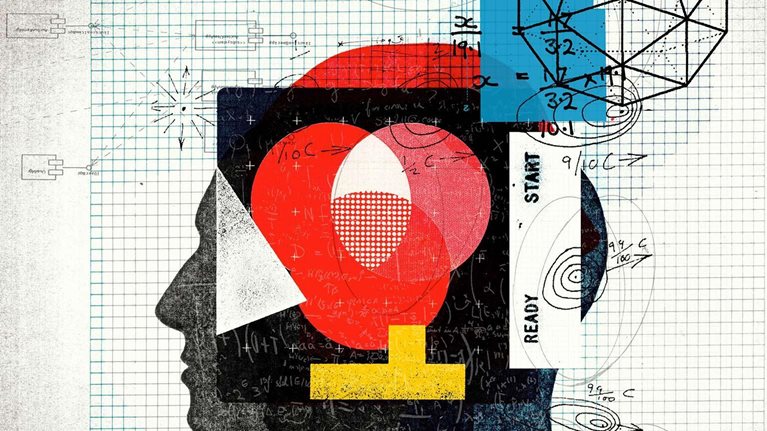Dow has worked to rebuild itself as an agile, innovative organization with a major focus on the customer value chain. In this interview, with McKinsey’s Rik Kirkland, president, chairman, and chief executive officer Andrew N. Liveris describes the company’s evolution, including how Dow has dramatically reduced the average age of the organization’s workforce, fostered a culture that resembles a start-up, and shifted its portfolio to value-added markets. An edited transcript of Liveris’s remarks follows.
Interview transcript
Growing by changing
Growth comes and goes. Growth is not ubiquitous. Growth is not even—it’s not peanut butter spread over a sandwich. You’ve got to be agile, go to growth areas, and then stick with them. That means different types of customer arrangements, different types of business models at the market face. And the sorts of things we used to do, you know, “If you build it, they will come,” are long gone.
It’s no longer just products. It’s no longer just applications. It’s actually market creation, value-chain creation, and then getting involved with technology, like an IT company. Chemical companies have not been great at doing that. Our transformation has moved us in that area. And I’m pretty proud to say the new Dow is a company that has a portfolio 70 percent of which is now anchored very much in value-add markets.
Addressing growth where growth is, being a part of the customer value chain, and traveling at the speed of live—that’s a new type of enterprise.
Innovating at the intersections
Markets are intersecting. Great examples of that, where you’re at the nexus, are energy, food, and water. And there are trade-offs being made by end-use customers, whether they are actually governments or companies.
In my world, one of the most exciting parts of our transformation and collaboration is the intersection of sciences. There was a time when—if you take our metamorphosis—we were an inorganic chemical company, a piece of chemistry. We became an organic chemical company on top—another piece of chemistry. Then we became a petrochemical company. Then we became a plastics company. All those were singular sectors. Today, we have to be all of those. We have to have material science, biological science, and physics. And it’s at those intersections where innovation is occurring.
Where we’ve paid a lot of attention to these intersections is our sustainability goals. When we set those goals, one of the things we said was we wanted to identify half a dozen areas where we could achieve breakthroughs—world-class breakthroughs to challenges the world faces. Food is an example. We’ve really put good chemistry in place in terms of genetically modifying seeds to produce a type of canola oil that has maximum Omega-9s. And that actually has taken 1.5 billion pounds of fat out of the American diet. All sorts of fast-food companies are using it. All sorts of end users, including the consumer, now see Dow-brand Omega-9 oils as an example of a product where we went all the way to the consumer.
Another example is BETAMATE structural adhesives, which take out any need to weld metal to metal and then metal to plastic. If you can use an adhesive, you literally take 30 to 40 pounds out of every car manufactured and therefore reduce gasoline use, resulting in more energy-efficient vehicles. We have now taken that to the next step, and are working on carbon fiber technology.
Creating a start-up culture
It’s a long-cycle and short-cycle world. I’ve got short-cycle growth cycles, but R&D is long cycle. So how do I put those two cycles together and have the resiliency, the patience to literally—to use baseball as my analogy—hit singles, and doubles, and occasionally a home run? Hitting singles and doubles is not sexy. It doesn’t, you know, have broad appeal. But Dow has been a prolific patent producer the past many years: we’ve rebuilt ourselves as an agile commercialization, innovation, and R&D machine. And that has been a cultural change.
People have asked me, “What’s the hardest thing to do?” It’s that. I mean, we can buy and sell companies with the best of them, integrate them, perhaps eventually sell them. But to change the culture so you can be a fast, short-cycle innovation-centric company requires a different type of R&D engine. The IT world showed us what type of R&D engine you need. It’s literally hiring millennials: hiring the entrepreneurs that normally would go to start-ups, and having a culture that resembles a start-up inside your company.
More than half of the 22,000 employees Dow has added in the past five years are younger than 32. Overall, the percentage of employees under the age of 30 in our professional workforce has gone from 9 percent in 2004 to 15 percent today. It’s not that age is always an indicator of entrepreneurship—I’d like to think I’m still an entrepreneur. But I will tell you that having this new type of lifeblood in the company has changed the company.
We’ve got programs that give some of these 20-somethings and 30-somethings seriously large responsibilities early in their careers, and really test their ability to be future leaders of this sort of nimble enterprise. That’s just like it was done with me. I was tested when I was in my 20s and 30s, but we have stifled a lot of that in the middle layers of companies. That’s why big companies often fail. We put young people in the office of the CEO. They write my speeches. They go around the world with me. They are part of the agenda. And it’s not just around my office—our entire executive wing has groups like that. We have bridged generations by actually having young people in the room, making them part of the conversation. At our global leader meetings, we invite our up-and-coming talent—that used to be a job grade thing.
Changing as a leader
The first thing I’d say about my role as CEO is I’m on my fourth reinvention of myself on the job: ten years ago, five years ago, three years ago, and today. That means almost certainly that three years from now, five years from now—it’s a continual evolution. It’s an evolution that follows the enterprise. I’ve had to change my priorities as the company has changed.
The one thing that I think is a common to that change is how much overlapping circles are now becoming a new reality for the CEO. Overlapping circle number one: strategy and operations. I’d say ten years ago, that was 90 percent of the job. But overlapping circle number two, the one that’s becoming more and more important, is the company’s reputation. Now, one would always say that’s been part of the CEO’s tenure. But now, the judge, the jury, the trial, the media, the speed of live, the world of social media—everything you do is scrutinized. Every word you utter, every place you go, what you do, how you do it. You have to have this ability to pivot with the constituency that’s out there needing to know more about your enterprise, whether that’s a government, whether it’s your communities. We’ve got lots of customers: suppliers, value chains, and partners. We’ve got lots of joint ventures. The CEO has to be ubiquitous and in person.
Drowning in data
I’m a student of technology. I’m a student of digitization. I’ve embraced the whole IT world from very early on in my career to its current form, and I am challenging our company to continually embrace it, not so much as a data provider or an analytical tool but as a knowledge provider. Because it’s moving so fast, we will soon see what knowledge provision looks like in the areas of medicine, energy, and food—all the key things that trouble humanity.
We are also getting lots of data and lots of analytics. And we’re drowning. And then we’re getting everyone’s opinion on everything. And we’re drowning. What companies need is to know how to filter, how to put all of this information into a useful paradigm so it’s not just information technology, but knowledge. Knowledge enterprise is not a new thing. In fact, your physical assets are a manifestation of your knowledge: you build a physical asset because you know how to build it. But the next lot of physical assets, and the next lot, the next lot, the next lot—that’s all the knowledge you gained as an enterprise.
So knowledge enterprise has to embrace digitization that results in increased knowledge to beat your competitors. Hopefully, you have the agility to outpace everyone else. And now your competition’s coming from everywhere. So this cannibalization point, short-cycle point, is the only response. Agility, knowledge—you put it in place, get ready to cannibalize yourself, and do it again, do it again, do it again.
Big companies aren’t very good at doing that. And creating that sort of cultural change is the biggest challenge of any enterprise. I never use this term at Dow because it’s just not applicable, but I would say that while you’re never done transforming, you better be done transforming. Because if you haven’t transformed, you are done.


